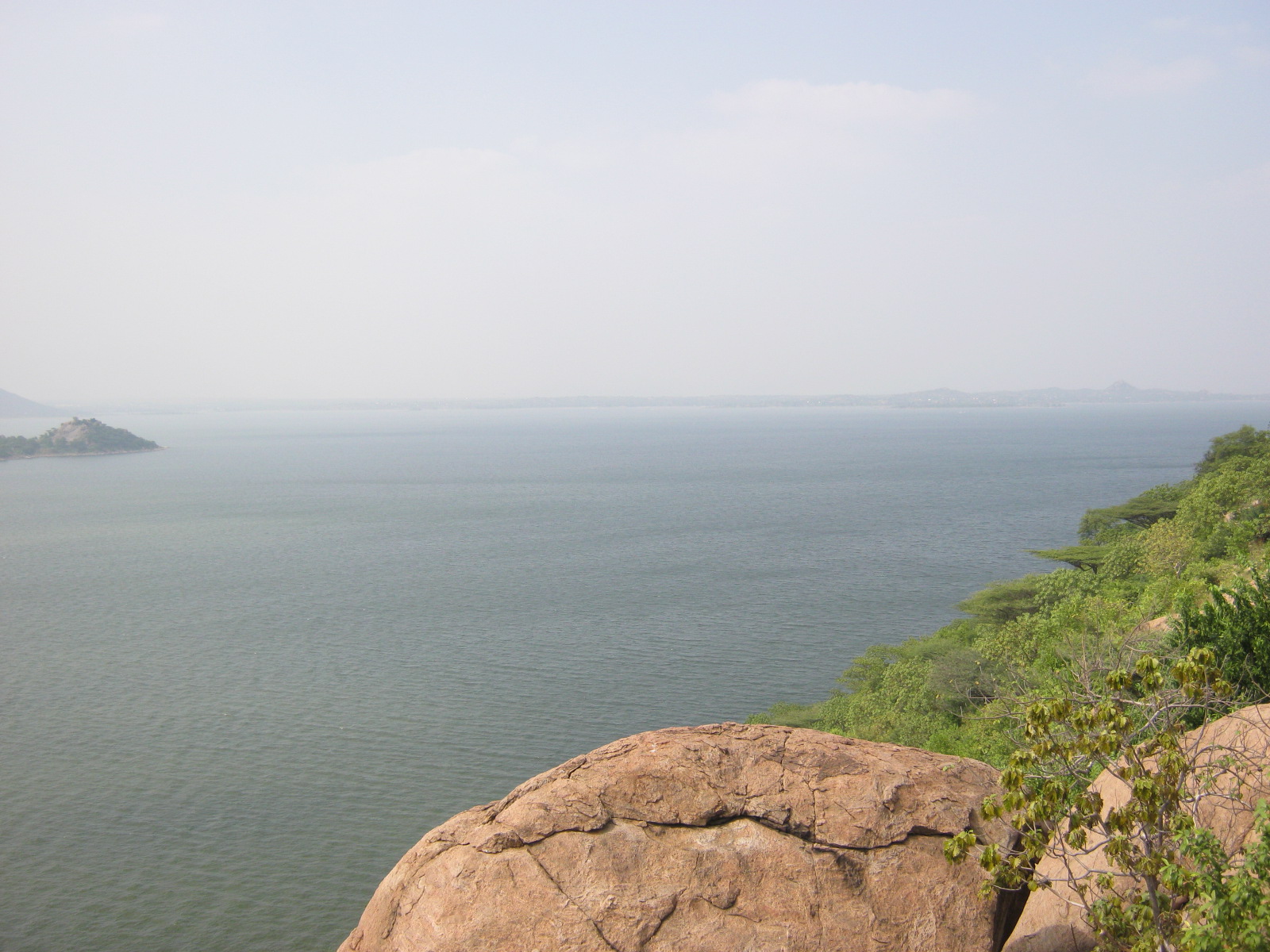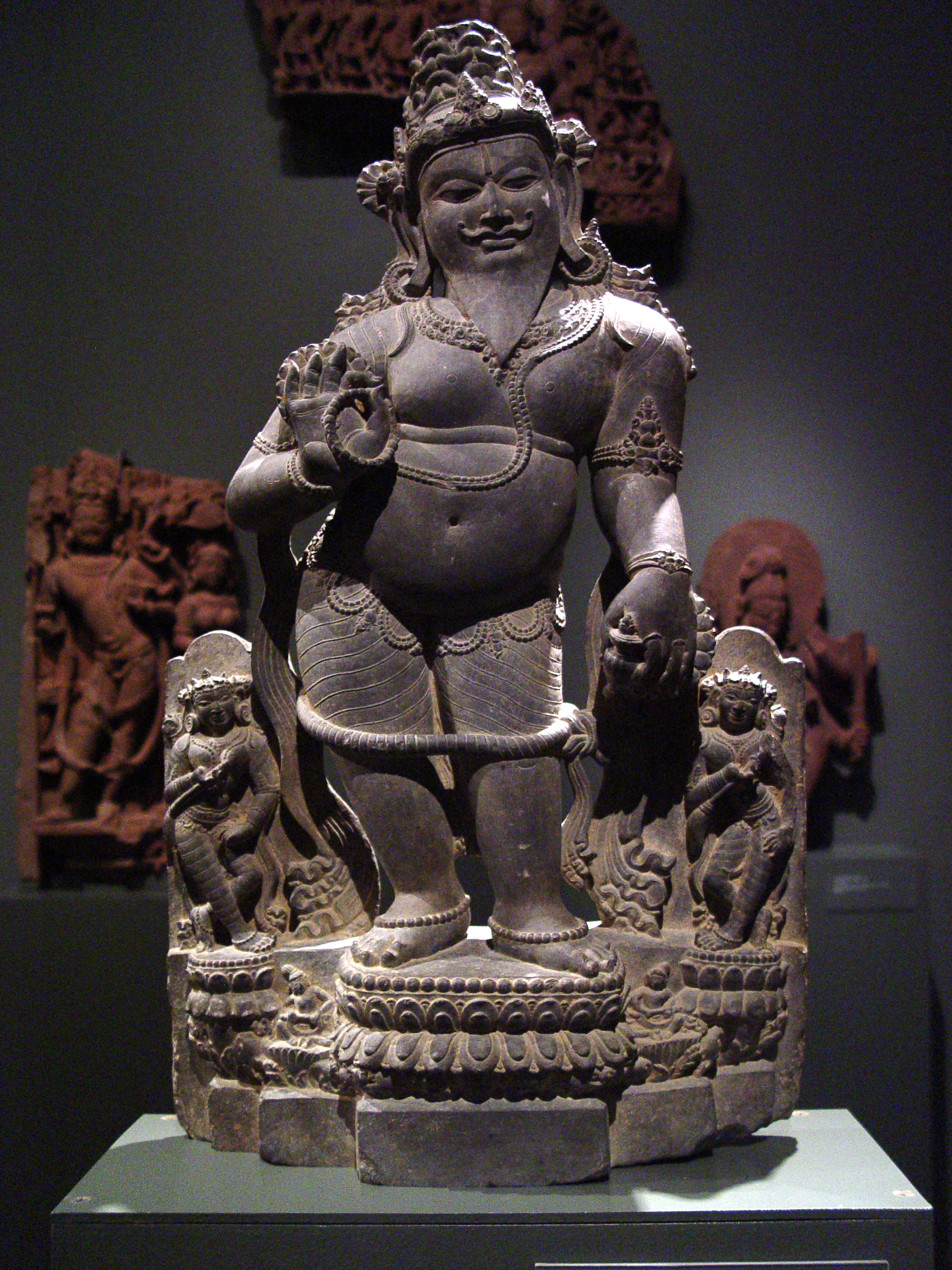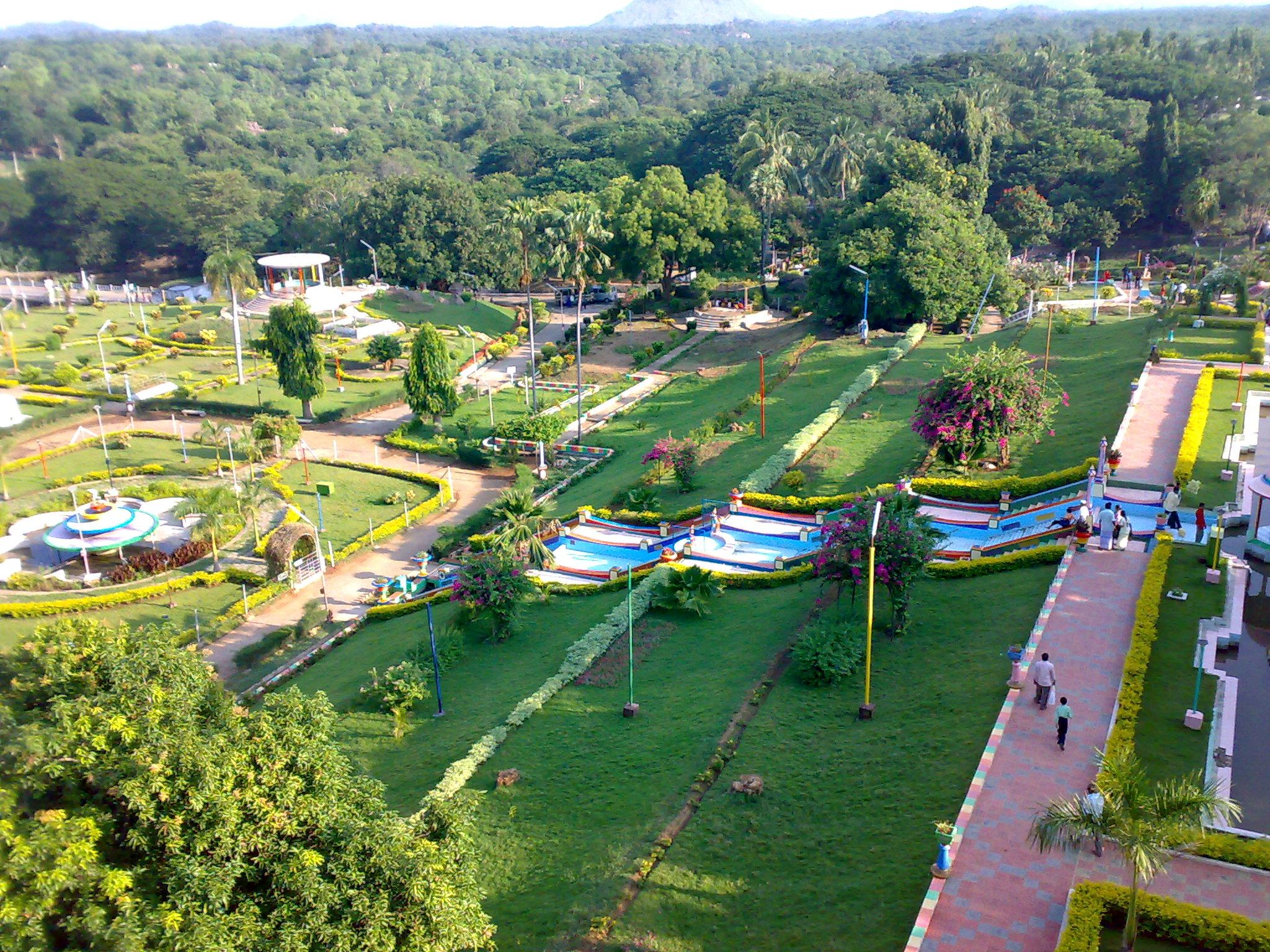|
Ponnaiyar River
The South Pennar River (also known as ''Dakshina Pinakini'' in Kannada and ''Thenpennai or Ponnaiyar'' or ''Pennaiyar'' in Tamil) is a river in India. Bangalore, Hosur, Tiruvannamalai, and Cuddalore are the important cities on the banks of South Pennar river. This is the second longest river in Tamil Nadu, with a length of 497km, after the Kaveri. Chandapura, Anekal, Hosur, Bagalur and Chengam are the major industrial settlements on its banks. The river is severely polluted by industrial waste as it flows through major industrial areas in the eastern suburbs of Bangalore, Industrial parks of Hosur and Chengam. The river originates in the Nandi Hills in the Chikkaballapura district of Karnataka and flows through Tamil Nadu before emptying into the Bay of Bengal. It has a catchment area of located in Karnataka and Tamil Nadu states. Small dams of Kelavarapalli and Krishnagiri Dams are built across this river near Hosur and Krishnagiri. The largest dam on this river, Sathanu ... [...More Info...] [...Related Items...] OR: [Wikipedia] [Google] [Baidu] |
Karnataka
Karnataka (; ISO: , , also known as Karunāḍu) is a state in the southwestern region of India. It was formed on 1 November 1956, with the passage of the States Reorganisation Act. Originally known as Mysore State , it was renamed ''Karnataka'' in 1973. The state corresponds to the Carnatic region. Its capital and largest city is Bengaluru. Karnataka is bordered by the Lakshadweep Sea to the west, Goa to the northwest, Maharashtra to the north, Telangana to the northeast, Andhra Pradesh to the east, Tamil Nadu to the southeast, and Kerala to the southwest. It is the only southern state to have land borders with all of the other four southern Indian sister states. The state covers an area of , or 5.83 percent of the total geographical area of India. It is the sixth-largest Indian state by area. With 61,130,704 inhabitants at the 2011 census, Karnataka is the eighth-largest state by population, comprising 31 districts. Kannada, one of the classical languages of India, ... [...More Info...] [...Related Items...] OR: [Wikipedia] [Google] [Baidu] |
Kaveri
The Kaveri (also known as Cauvery, the anglicized name) is one of the major Indian rivers flowing through the states of Karnataka and Tamil Nadu. The Kaveri river rises at Talakaveri in the Brahmagiri range in the Western Ghats, Kodagu district of the state of Karnataka, at an elevation of 1,341 m above mean sea level and flows for about 800 km before its outfall into the Bay of Bengal. It reaches the sea in Poompuhar in Mayiladuthurai district. It is the third largest river after Godavari and Krishna in southern India, and the largest in the State of Tamil Nadu, which, on its course, bisects the state into north and south. In ancient Tamil literature, the river was also called Ponni (the golden maid, in reference to the fine silt it deposits). The Kaveri is a sacred river to the people of South India and is worshipped as the Goddess Kaveriamma (Mother Cauvery). It is considered to be among the seven holy rivers of India. It is extensively used for agriculture in bo ... [...More Info...] [...Related Items...] OR: [Wikipedia] [Google] [Baidu] |
Sangam Literature
The Sangam literature (Tamil: சங்க இலக்கியம், ''caṅka ilakkiyam'';) historically known as 'the poetry of the noble ones' (Tamil: சான்றோர் செய்யுள், ''Cāṉṟōr ceyyuḷ'') connotes the ancient Tamil literature and is the earliest known literature of South India. The Tamil tradition and legends link it to three literary gatherings around Madurai and Kapāṭapuram ( Pandyan capitals): the first over 4,440 years, the second over 3,700 years, and the third over 1,850 years before the start of the common era. Scholars consider this Tamil tradition-based chronology as ahistorical and mythical. Most scholars suggest the historical Sangam literature era spanned from c. 300 BCE to 300 CE, while others variously place this early classical Tamil literature period a bit later and more narrowly but all before 300 CE. According to Kamil Zvelebil – a Tamil literature and history scholar, the most acceptable range for the Sangam l ... [...More Info...] [...Related Items...] OR: [Wikipedia] [Google] [Baidu] |
The Hindu
''The Hindu'' is an Indian English-language daily newspaper owned by The Hindu Group, headquartered in Chennai, Tamil Nadu. It began as a weekly in 1878 and became a daily in 1889. It is one of the Indian newspapers of record and the second most circulated English-language newspaper in India, after '' The Times of India''. , ''The Hindu'' is published from 21 locations across 11 states of India. ''The Hindu'' has been a family-owned newspaper since 1905, when it was purchased by S. Kasturi Ranga Iyengar from the original founders. It is now jointly owned by Iyengar's descendants, referred to as the "Kasturi family", who serve as the directors of the holding company. The current chairperson of the group is Malini Parthasarathy, a great-granddaughter of Iyengar. Except for a period of about two years, when S. Varadarajan held the editorship of the newspaper, the editorial positions of the paper were always held by members of the family or held under their direction. Histo ... [...More Info...] [...Related Items...] OR: [Wikipedia] [Google] [Baidu] |
Varthur Lake
Varathur (originally known as) was once famous for a fort built here by the ancient rulers which was strengthened and expanded by his excellency Kempegowda. It is also believed that Kempegowda set up a weapons armory here. Even today there exists a street named Kote Beedhi (Fort Street), according to locals Vahnakula Kshatriyas first settled in the Kote Beedhi area around the famous Chennakeshava Swamy Temple. However, after the invasion by Islamic fanatic Ranadulla Khan (of the Bijapura Sultanate) and his military commander Shahji Bhonsale, the people moved from the Fort Street to settle far away in what is today known as Thigalara Beedhi Varthuru is a suburb situated in the Eastern periphery of Bangalore City and part of the internationally famous Whitefield township. Varthuru is a Hobli and part of the Bruhat Bangalore Mahanagara Palike. Varthuru was a Legislative Assembly in the state of Karnataka but was split into three legislative assemblies C.V.Raman Nagar, Mahadevapura ... [...More Info...] [...Related Items...] OR: [Wikipedia] [Google] [Baidu] |
Bellandur Lake
Bellandur Lake is located in the suburb of Bellandur in the southeast of the city of Bengaluru. It is the largest lake in the city. It is a part of Bellandur drainage system that drains the southern and the south-eastern parts of the city. The lake is a receptor from three chains of lakes upstream, and has a catchment area of about . Water from this lake flows further east to the Varthur Lake, from where it flows down the plateau and eventually into the Pinakani river basin. History Bellandur Lake is believed to be originally a tributary of the Dakshina Pinakini river (also known as the Ponnaiyar River). Old narratives cover village watermen, deities, cultural practices, and attached commons that provided wood and land for grazing. In the 1940s, the lake was used for landing amphibious aircraft such as the Catalina. The impact of urbanisation goes back to 1980s when unplanned growth broke the chain of tanks and lakes feeding Bellandur lake. This reduced the amount of rain w ... [...More Info...] [...Related Items...] OR: [Wikipedia] [Google] [Baidu] |
Deccan Herald
''Deccan Herald'' is an Indian English language daily newspaper published from the Indian state of Karnataka. It was founded by K. N. Guruswamy, a liquor businessman from Ballari and was launched on 17 June 1948. It is published by The Printers Mysore, a privately held company owned by the Nettakallappa family, heirs of Guruswamy. It has seven editions printed from Bengaluru, Hubballi, Davanagere, Hosapete, Mysuru, Mangaluru, and Kalaburagi. History and background ''Deccan Herald'' was launched on 17 June 1948. Its founder, K. N. Guruswamy, in search of a suitable location for a news publishing business, purchased a bar and restaurant called Funnel's, that was owned by an Irish couple, in March 1948. Despite having no experience in the newspaper industry, Guruswamy, along with his close aides and well wishers, decided to launch two newspapers from Bangalore since there was no such title at the time. The Deccan Herald is an Indian English-language daily newspaper published ... [...More Info...] [...Related Items...] OR: [Wikipedia] [Google] [Baidu] |
Moongilthuraipattu
Moongilthuraipattu is a village panchayat in Sankarapuram taluk of kallakurichi district in the state of Tamil Nadu. It is on the banks of Thenpennai (South Pennar River) river. It is located on State Highway SH-6 which connects Tiruvannamalai and Kallakurichi. The village has a sugar mill and it is established and run by Tamil Nadu Co-operative Sugar Federation Ltd. The main source of income is sugar and sugar cane-based agriculture. Sugar mill The Kallakurichi co-operative sugar mill and its associated industry are the major source of income. The mill was commissioned on 12 February 1967 with original crushing capacity of 1000 TCD. The sugar mill was expanded over a period of time and its current crushing capacity is 2500 TCD as of 31 July 2009. Educational institutions Government Higher Secondary School is on the south side of the village and sugar mill owned K.C.S.M. Matriculation High School is on the north side. # Government Higher Secondary School # KCSM Matric Hr Sec Sch ... [...More Info...] [...Related Items...] OR: [Wikipedia] [Google] [Baidu] |
Sathanur Reservoir
Sathanur Dam which forms the Sathanur reservoir, is one of the major dams in Tamil Nadu. It is constructed across the Thenpennai River also called as Pennaiyar River in Thandarampet taluk among Chennakesava Hills. The dam can be reached by road from Tiruvannamalai City. It was constructed in 1958. There is also a large crocodile farm and a fish grotto. Parks are maintained inside the dam for tourists to visit and the gardens have been used by the film industry. History The Sathanur Dam Project was proposed in the First Five Year Plans of India and started in the year 1953. The Dam works are completed in the Second Five Year Plans of India and is operational from 1958. The project was inaugurated by the then Chief Minister of Tamil Nadu K. Kamaraj. This is one of the Major irrigation schemes were planned in Kamaraj's period . The other projects are Lower Bhavani, Krishnagiri Dam, Mani Muthuar , Cauvery Delta , Aarani River, Vaigai Dam , Amravathi , Sathanur , Pullambadi ... [...More Info...] [...Related Items...] OR: [Wikipedia] [Google] [Baidu] |
Drainage Basin
A drainage basin is an area of land where all flowing surface water converges to a single point, such as a river mouth, or flows into another body of water, such as a lake or ocean. A basin is separated from adjacent basins by a perimeter, the '' drainage divide'', made up of a succession of elevated features, such as ridges and hills. A basin may consist of smaller basins that merge at river confluences, forming a hierarchical pattern. Other terms for a drainage basin are catchment area, catchment basin, drainage area, river basin, water basin, and impluvium. In North America, they are commonly called a watershed, though in other English-speaking places, "watershed" is used only in its original sense, that of a drainage divide. In a closed drainage basin, or endorheic basin, the water converges to a single point inside the basin, known as a sink, which may be a permanent lake, a dry lake, or a point where surface water is lost underground. Drainage basins are similar ... [...More Info...] [...Related Items...] OR: [Wikipedia] [Google] [Baidu] |
Chikkaballapura District
Chikkaballapura district is a district in the state of Karnataka, India. On 23 August 2007, it was carved out of the pre-existing Kolar district which was the fourth largest district (before bifurcation) of Karnataka by moving the talukas of Gauribidanur, Gudibanda, Bagepalli, Chikballapur, Manchenahalli, Sidlaghatta and Chintamani into the new district. Kannada is the official and most widely spoken language. The town of Chikballapur is the district headquarters and a key transport link in the North Bangalore area. The north-south six-lane National Highway 44 (NH-44) as well as the East-West Highway 69 go through the district. A rail line runs north from Bangalore to the town of Chikballapur, east past Doddaganjur to Srinivaspur and south to the town of Kolar. Bhoga Nandeeshwara Temple (also spelt "Bhoga Nandishwara" or "Bhoga Nandishvara") is a Hindu temple located in Nandi village, at the base of Nandi Hills (or Nandidurga) in the Chikkaballapur district of Karnataka stat ... [...More Info...] [...Related Items...] OR: [Wikipedia] [Google] [Baidu] |
Chengam
Chengam or ''Chengamma'' as on British records, is an important market town and a taluk headquarter in the Foot hills of Eastern ghats in Tiruvannamalai district of Tamil Nadu, India. Chengam is the gateway to the Chengam pass in the Eastern ghats between Javvadhu hills to the north and Chennakesava hills to the south. The town is also the center for various industrial activities which includes Sathanur dam hydro-electric project, Aavin milk processing plant and Periya Kolappadi SIDCO estate. History The book Malaipadukadam in the Sangakkala literature mentions that Nannansei Nannan was a short-lived king who ruled from the Palkunrakottam hill with his capital as his capital. Many rare historical sources such as inscriptions and archeological finds have been found to prove this. Researchers also say that Nannan-ruled Navira Hill now refers to the Savvadu Hills and some to the mountains near the sea. Initially Chengam was an assembly constituency (SC) of Tiruppattur (Lok Sabh ... [...More Info...] [...Related Items...] OR: [Wikipedia] [Google] [Baidu] |



.jpg)

